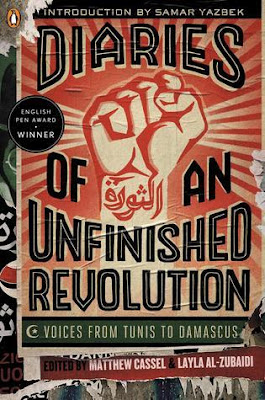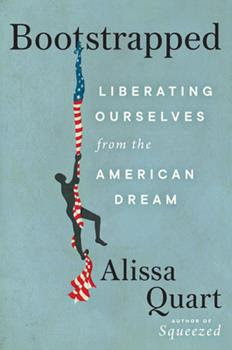“Transatlantic” created / directed by A. Winger, D. Hendler, 2023
This series is part of the 'World War II' genre which never seems to run out of steam – probably because there are echoes in the present. This limited series tries to reference the present. It's 1940 and the Nazi's have just occupied Paris. There is a U.S. consul in Marseilles, Vichy France, who wants no part of this war, which is why he's hoping the Republican candidate, Wilkie, beats Roosevelt. He's in discussions with a technology company offering new typewriters and data collection methods that wants to do business in Europe, including Germany. He doesn't care about Jews, refugees, pinkos or any targets of the new regime, following U.S. policy. Sound familiar?
 |
| The real M Ernst, J Breton, A Masson, A Breton, Varian Fry of the ERC |
Then there is the Emergency Rescue Committee (ERC) in Marseilles, set up by prominent people States-side who want to rescue known European intellectuals, writers and artists from the approaching Nazis and the Vichy police. It's based on a true story. Who are among the 2,000 they actually got out of Europe? Walter Mehring, Walter Benjamin, Marc Chagall and his wife, Hannah Arendt, Andre Breton and his family, Marcel Duchamps, Max Ernst and Victor Serge, among others. Peggy Guggenheim helps. Benjamin famously dies on the Spanish border. They first operate out of the classic Hotel Spendide in the city, then get a large chateau outside town, Villa Air Bel, to stash refugees. The authors said this was an expression of the present reality of statelessness, but most of these people are part of a very elevated, elite crowd – unlike the present.
The ERC finds a path through the Pyrenees to Francoist Spain and on to Lisbon. They use a huge ship to get 300 refugees to the Caribbean, including many ordinary Jews. They get Serge to Mexico, even as a declared revolutionary. They have to constantly deal with the Vichy police chief and the U.S. consulate, a consulate which is a nest of contradictions.
The series' idea of the 'Resistance' is one run by monied, kindly and daring Americans, with some help from the British Secret Service and colonized Africans. Much of this true, some is not. One socialist is portrayed. The mood of the film is like a Hollywood production, romantic and wacky, with many narrow escapes. The romances are invented; the gay relationship, de rigueur at this point, is fictionalized. It's their version of Schindler's List and Raoul Wallenberg's efforts to save Jews. The film ignores the French underground, which was mostly based on Communist Party cells, though it shows some radical partisans raising their fists in secret night-time meetings. Even the Gaullist underground is ignored. The key African hotel worker wants to crush Nazism, then overthrow colonialism. The German socialist ultimately stays in France to fight the fascists, along with the rest of the local resistance figures. They are portrayed as politically vague however. The rest of the ERC bails.
 |
| Surreal'ist' Dinner Party in New York? |
The
artists and writers are mostly shown to be kooky or weaklings, though able to
throw incredibly fun parties. Hannah
Arendt comes off as the most serious. To
people who don't know who they are, they are just question marks. They are the 'baggage,' not the focus. During the blow-out party Elsa Schiaparelli's
'shoe hat' makes an appearance, along with a fantastic collection of head-wear,
while the chateau is decorated with surrealist art. This event seems to be the actual center of
the film – partying and loving on the edge of danger.
Winger was involved in 'Unorthodox,” about a distressed Jewish girl who runs away to Germany from her fundamentalist sect in New York; and “Deutschland 83” and “Deutschland 86,” two cold war spy series set in East and West Germany. The screenplay for Transatlantic is based on the book, “The Flight Portfolio.”
 |
| The real 'party' scene at Villa Air-Bel |
My gut feeling about this film – as I didn't know the basic facts – is that it is purposely light-minded, fun and romantic because they felt a more realistic portrayal would put off viewers. The invisibility of the people they were rescuing also bothered me. No explanation is given to who these people are, just assuming the audience is knowledgeable about them. Ignoring the actual working-class communist / socialist / Gaullist Resistance maquis, which was organizing in Marseilles, is another failure. It is a political omission. The leader of the ERC, Varian Fry, is made out to be a legalistic and stubborn dolt, which he was not in reality. This perhaps in order to generate some fake cinematic arguments. Nor was his alleged gayness ever public, unlike this story.
This is fictionalized history, which becomes 'actual' history to many viewers who don't know or check out the whole story. Is this European Hollywoodism? It has inspired 'surrealist' dinner parties in New York, so there's that.
Prior blog reviews on this subject, use blog search box, upper left, to investigate our 16 year archive, using these terms: “Fugitives of the Forest,” “One Way Street,” “The Coming Insurrection,” “Art of the Soviets” (Part 2); “Not a Nation of Immigrants,” “Central America's Forgotten History,” “The Great Escape,” “Stateless.”
The Cultural Marxist
April 27, 2023


















